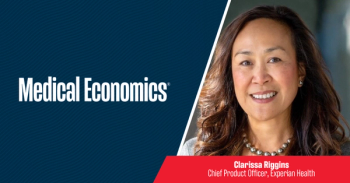
- Medical Economics November 2023
- Volume 100
- Issue 11
How pre-tax health funds remove barriers to accessing primary care
You help your patients maintain their physical health. There are tools to help them manage their financial health.
According to
As health care costs continue to rise, patients/health consumers are in dire need of a solution that will save them money and curb the onset or progression of health conditions in their later years.
Short-term: cost management
In addressing health care costs, FSAs, HRAs, and HSAs offer immediate solutions by allowing pre-tax contributions, reducing taxable income, and increasing financial resources for essential health expenses – often saving account holders
Price transparency efforts have helped amplify FSAs and HRAs by helping patients and health consumers shop for the best price and ensuring that their pre-tax dollars go as far as possible. At Binkey, we have adopted a similar thesis. Our goal is to democratize accepting FSA/HRA/HSA payments and make it easier for consumers to shop for the best deals, the best experiences, and the best loyalty rewards for their eligible products.
Also, pre-tax health funds introduce budgeting predictability by setting aside dedicated funds for health care needs. This proactive approach equips individuals to seek preventive care services and manage unforeseen medical situations confidently. These accounts empower individuals to proactively manage health care costs, establishing a harmonious equilibrium between fiscal stability and physical/mental wellness.
Long-term: financial wellness
In the long-term, individuals could see their financial wellness improve exponentially by using HSAs. Account holders capitalize on its unique roll-over feature and investment potential. Unspent HSA funds accumulate annually, building a substantial reserve over time. Coupled with investment growth opportunities, this builds a valuable resource to address future health care expenses.
The integration of FSAs, HRAs, and HSAs nurtures financial literacy in health care decisions. As individuals navigate these accounts and make informed choices about fund allocation, they gain a deeper understanding of health care costs. This knowledge empowers them to make astute health care decisions, optimize fund usage, and implement effective cost management strategies. This comprehensive approach fosters control over immediate health care expenses and cultivates a proactive stance toward managing health care costs over the long term.
Guiding patients toward financial and health wellness
For primary care physicians, patient education is paramount. Most do not use pre-tax health accounts or don’t know about them at all. A conversation about these tools could be life changing. Here’s how to guide patients about FSAs, HRAs, and HSAs:
Begin with the ABCs of FSAs and HSAs: Shed light on how these accounts work, emphasizing their tax benefits, wealth-building opportunity, and the extensive range of expenses they cover.
Promote early care and detection: Discuss these tools in the context of averting preventable medical conditions. Emphasize the value of using FSAs and HSAs for regular check-ups, preventive screenings, and medical tools. Highlight that this approach leads to enhanced health outcomes and long-term cost savings.
Make it real for patients: Create a roadmap that shows patients how price transparency tools and these pre-tax health funds can be incorporated into their care plans.
Reminders save money and lives: Use every interaction with patients to make sure they are using these funds, especially from FSAs, most of which expire every year. About
This is a crucial conversation
Primary care physicians are not just medical practitioners; they are agents of empowerment, bridging the gap between health care and financial wellness. By advocating for the adoption of FSAs and HSAs, physicians infuse their practices with a holistic approach – one that prioritizes both immediate medical needs and long-term well-being.
As primary care physicians engage in proactive conversations, provide personalized guidance, and educate patients about the advantages of these accounts, they spark a transformation – one where patients are not only healthier, but also empowered to navigate their health journeys with financial security and confidence.
Obiaku “Obi” Ohiaeri is the founder and CEO of
Articles in this issue
about 2 years ago
AI and the future of long-term careabout 2 years ago
Limiting malpractice insurance costsabout 2 years ago
Stocks vs. bonds: There’s no contestabout 2 years ago
What to look for in an AI scribe toolNewsletter
Stay informed and empowered with Medical Economics enewsletter, delivering expert insights, financial strategies, practice management tips and technology trends — tailored for today’s physicians.


















